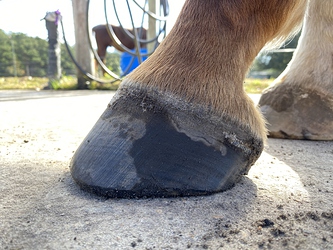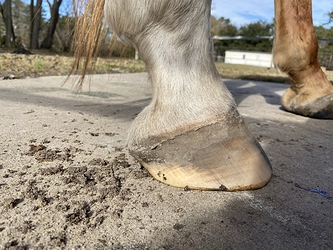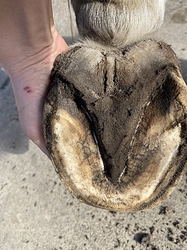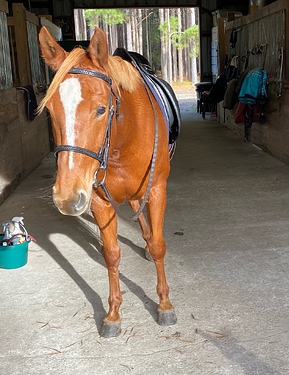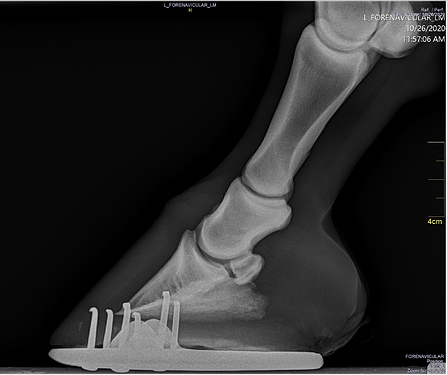Hi!!! I am a lifetime rider but new horse owner as you all might have seen by my ten million posts on the Horse Care forum.
I’ve been trying to learn everything I can about feet, and have been dying to post my horse’s feet online and get some opinions about them!! There’s nothing really specifically wrong, she’s sound and doing fine, but she is a QH and has less than perfect conformation so I’m sure there’s areas that can be worked on.
In her PPE she hoof tested positive on both front frogs, so I x-rayed her front feet, and the PPE vet said the X rays looked alright to her. I’m not sure how much weight to put in hoof testers, my farrier seems to think it’s not the most important thing in the world but I’m not sure how universal that opinion is… And she is slightly toed out in front as well.
I gave my farrier (who is also new to me) the x-rays and the vet’s writeup, and he put rubber pads on her because the vet suggested some experimentation with her shoeing setup. However right after he did it he was like “she probably doesn’t need these,” so in her next appointment which was about a week ago, I asked him what he thought about just pulling off her front shoes altogether and he was like, “sure we can try it.”
So now she’s barefoot! I’m hoping after like one more week I can assess whether I’ll keep them off and probably will invest in some good hoof boots then. I didn’t have any real reason to pull off her shoes other than just to try it for a cycle or two, and get a baseline of her hoof health - obviously open to putting them back on her if she needs it.
Here’s some feet pix (just of the front), I have a lot more but these are the most recent (from the past week!) Thoughts? Red flags??


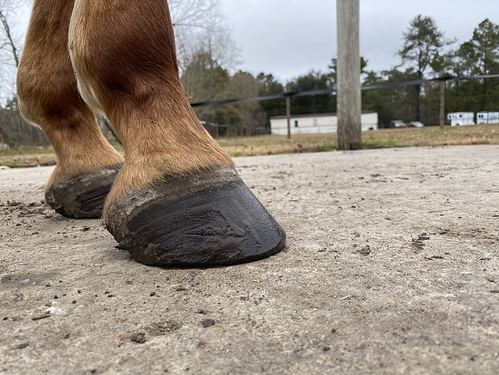

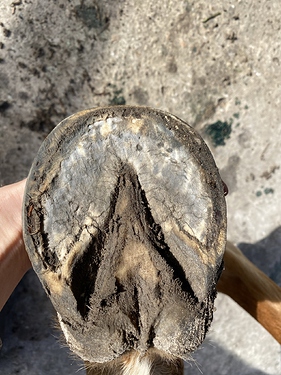
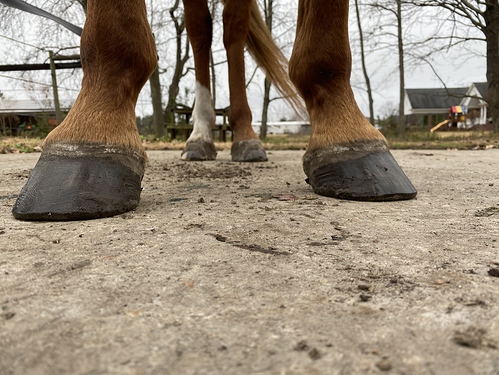
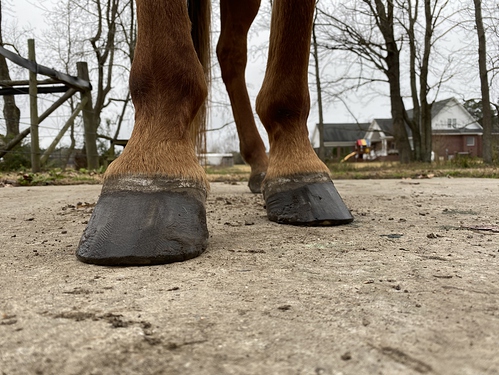

 It’s a little hard to see things in the best detail, not due to the quality of the photos, but due to the angle of the camera lens not being perpendicular to the things we’re seeing. That distorts things pretty quickly.
It’s a little hard to see things in the best detail, not due to the quality of the photos, but due to the angle of the camera lens not being perpendicular to the things we’re seeing. That distorts things pretty quickly.